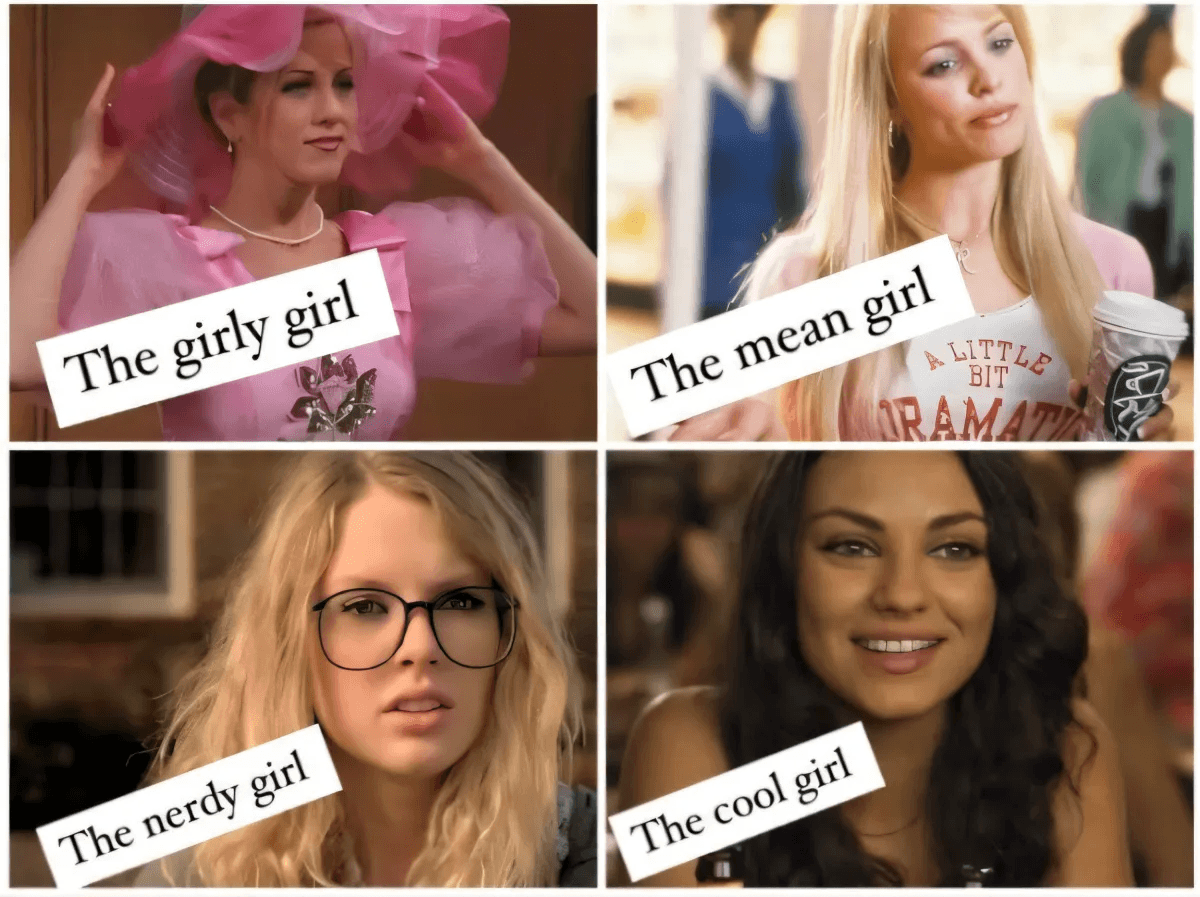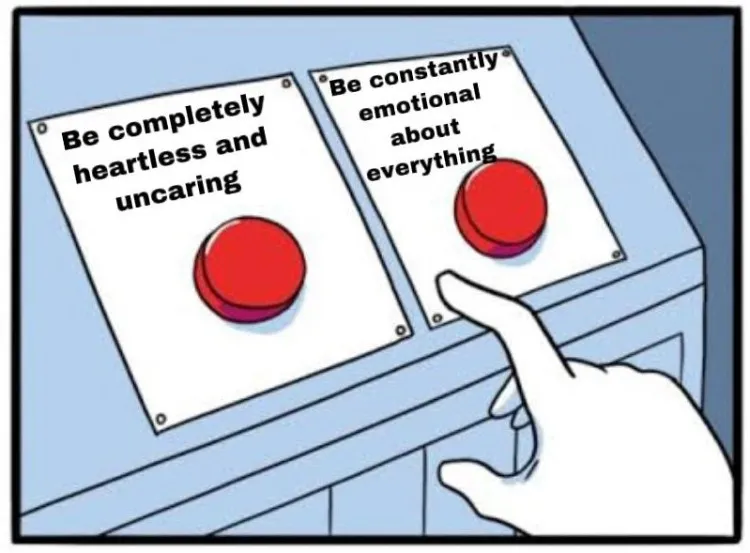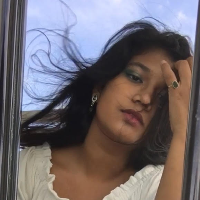The Different Types Of Girls On Screen
For years, women in movies and pop culture have been grouped together based on certain traits and tropes, such as the "nerdy girl", the "mean girl", the "cool girl" and many more. These girls are usually defined by just one characteristic, such as liking books, being angry, being nice, and so on.
In addition to being grouped, these girls are often pitted against each other. For example, in the coming of age classic "Sixteen Candles", protagonist Sam Baker's "good girl" character is contrasted with antagonist Caroline's vain, "mean girl" persona. In the rom-com, How To Lose A Guy in 10 days, the main lead's fun, cool girl character is contrasted with her colleague's girly girl nature.
We frequently see a dichotomy between the smart woman and the sexy woman, the ambitious woman and the caretaker, and many more.
The inherent problem with this phenomenon is that it considers these character traits as mutually exclusive, and in turn, limits the depth with which we perceive women.

How are women portrayed on screen?
People on screen exist for as long as the viewer wants them to. This applies to fictional characters in films and television shows, and to public celebrity personas. These characters are designed to be temporary, in order to fit into a situation.
The limited time for which they exist leads to crafted personalities based on existing cinematic tropes and archetypes.
Cinematic tropes are storytelling techniques that use universally known imagery to quickly convey a large amount of information to the audience. When tropes are applied to people, they become archetypes.
An archetype is a type of character, identified through traditional ideas or symbols about a person. We recognize an archetypical character using our psychology and our exposure to pre-existing characters. For example, the "Hero" character brings a particular image or personality to mind.
For example, a “Cinderella story” immediately informs the audience of rags to riches tale featuring a young, innocent woman. The usage of tropes and archetypes can quickly give the audience an idea of the character's interests, preferences, and motivations.
Therefore, we see that tropes and archetypes serve a clear purpose. However, when implemented poorly, they run the risk of being shallow and clichéd. Unfortunately, we often see poorly represented women in the form of these tropes.
Women on screen are often relegated to fit into just one trope. While men can be the hero, the boss, and the love interest, women are often forced to choose. We see these tropes play out in different characters.
For example, many movies feature the “Cool Girl” trope. The Cool Girl subverts expectations of femininity by being laid back and having traditionally masculine interests like sports and cars. She is created in contrast to the vain, gender-conforming Girly Girl trope. In these defined roles, we never see the Cool Girl lose her temper, or be emotional and we cannot see the girly girl being fun. We see this dynamic through Cool girl Donna and Girly girl Jackie in That 70's Show.
The Cool Girl seems to be defined by her interests, rather than her actions. This issue also arises with the Nerdy Girl trope. The nerdy girl is typically depicted as an introvert who enjoys reading and school work. She is contrasted with the Popular girl. The Popular Girl is social and is seen to have had many casual romantic endeavors. Many films position the nerdy girl as the better role model to the audience, even if the popular girl seems more loved in the cinematic universe initially.
This plays into the “smart versus sexy” or “brains over brawn” notion. We see this dichotomy play out in the classic Pride and Prejudice where we see a sharp contrast between bookish Elizabeth Bennet, who liberally rejects proposals while searching for the true love she sees in books; and her younger sister, who tries very hard to find a suitable match and attract attention for the sake of society.
Other tropes revolving around women include The Vamp, who is a vain, usually older, female villain. For example, the villain in Miss Congeniality is a former beauty queen who resorts to violence out of jealousy, and the loss of her youth. She is almost always contrasted with a young and beautiful protagonist who is trying to establish herself. Another layer of conflict between young and old women on screen is seen within the working girl trope. Working women are often criticized for either doing too much or too little.
While the young woman is praised for her ambition and independence, the older woman is criticized for maintaining that momentum instead of settling down. This also highlights the conflict between the working woman trope and the caregiver trope.

What is wrong with the current on-screen portrayal of women?
The existence of tropes is not inherently problematic. However, an environment where women feel the need to constantly perform these tropes can be.
As mentioned before, women on screen only exist for a few moments. Real women do not have that privilege and must find a way to navigate a constant stream of unpredictable scenarios. We respond to these scenarios based on what we know and see. When you are trying to put on a persona or emulate certain behaviors and characteristics, you limit your natural reactions and intuition.
In order to better understand this, think of it this way, you might be the cool, laid-back girl with your friends, but a girly girl with your partner. You could be a nice girl at home and the mean girl at school. You might be the icy career woman at work and the caregiver at home. It is not possible to always be cool, or nice, or sassy, you adapt your response to the situation and people you are with.
Nobody is ever just one thing, and portraying women on screen to have only one defining characteristic is unrealistic.
Another issue with such characterization is the pitting of one type of woman against another. We see this in various tropes and it trickles into how we perceive women in real life. We have seen women being put against women for having different trope-like personas for years now, not just in pop culture but in history. You can either be a Mary or Anne Boleyn, a Jackie or a Marilyn, a Katy Perry or a Lady Gaga, and most recently, courtesy of TikTok, the “Bruh girls” versus the “cute girls”.
The “bruh girls” versus “cute girls” trend was what peaked my interest in this topic. This TikTok trend would feature a short video of a girl or group of girls first being “cute girls” who do typically girly things such as take pictures for Instagram and dress fashionably. This is then followed by being a “bruh girl” who lets loose, drinks eats and has fun.
The catch? They are literally the same girl doing both things. They dressed cutely and took pictures for Instagram, and then had fun and filmed it.
I would call this the best of both worlds, but it’s not; because there is just one world. It is this real world, where people do different things at different times. The categorization of women in this situation was completely arbitrary and unnecessarily puts girls who prefer to act one way against girls who have different preferences.
This trend is symptomatic of a larger social trend, which is the “I’m not like other girls” mentality.
This mentality is typically found in young women who take pride in not being traditionally feminine and “fitting in” with a group of women. While there is nothing wrong with not wanting to fit into society, there is something alarming about trying to define yourself as being “not” something. If your motivation is to simply not be like a girl, your hatred is less toward society and more towards women.
However, one must ask, why? Why would a woman hate being viewed as a woman?
Well, I like to believe that she does not.
In my opinion, someone who says that they are “not like other girls” is really trying to say that she is more than a one-dimensional extension of her gender. It is an attempt to control your own narrative. By removing yourself from femininity, you might hope to be viewed as “one of the guys” and therefore be viewed with the same depth, complexity, and value with which society views a man.
Unfortunately, by trying to step away from the limiting trope-like interpretation, “not like other girls’ girls end up emulating the Cool Girl trope. In fact, girls who say that they are "not like other girls" became a trope itself, and are now often the butt of the joke.
How can we improve the portrayal of women on screen?
So, if everything is a trope, is there any escape from being viewed as a one-dimensional caricature of a woman?
Yes, there is. If the perception of women is based on the portrayal of one-dimensional women on screen, then the portrayal of women on screen can hope to fix our perception.
The use of tropes is not the problem, forcing a character to fit neatly into just one category is. An elegant solution is the intersecting of tropes. For example, in Tina Fey’s coming of age film Mean Girls, we see how Lindsay Lohan’s “Nice Girl” character was capable of becoming a mean girl. The film shows us that everyone is capable of being a mean girl. In addition, the character also blends the “hot girl” and “nerdy girl” trope, as the character is very intelligent but is also acknowledged to be attractive in the movie.
The intersecting of tropes allows the writer to apply the benefits of using tropes, without limiting a character to just one definition. At the end of the day, characters perform gender in different ways, however, gender roles do not have to define characters.
The intersection of tropes can also break down barriers between “types of women”, as we will see how everybody changes in different situations and those character traits are not mutually exclusive.
You might ask, why change how people are represented in media instead of discouraging people from behaving like media figures. This line of thinking is not achievable because mass media and society act like parallel mirrors. They reflect each other infinitely. Mass media and communication are made to be understood and emulated. If we cut out the idea of applying media in our lives, media and art lose value.
Asking viewers to not let media tropes impact their character is unfair, as characters are often made to be aspirational. For example, a child doesn’t wear a cape and dreams of flying to see the sights; the child does this to be Superman.
The reason I encourage heightened consciousness towards tropes and the importance of a holistic portrayal of women on screen is to curb incomplete portrayals that create unnecessary divisions between a group of people.
So if you are still wondering what "type" of girl you are or who the “other girls” are, I hate to break it to you, but there are no "other girls". There are no “types” of girls.
There are just girls who behave differently in different scenarios and have to take life as it comes.
Opinions and Perspectives
The parallel between historical figures and modern celebrities really drives home how persistent this issue is.
This article perfectly articulates why I've always felt uncomfortable with certain female character portrayals.
I appreciate that they offered solutions instead of just critiquing the problem.
Really makes you think about how these media portrayals shape our expectations of ourselves and others.
Fascinating how these tropes cross cultural boundaries too. They seem to be universal in mainstream media.
This whole discussion reminds me why representation behind the camera is just as important as in front of it.
The analysis of how these tropes affect workplace dynamics was particularly interesting.
I've noticed my friends and I subconsciously trying to fit into these roles since middle school.
This really explains why some female-led movies feel so refreshing when they break these patterns.
Wonder how many scripts get rejected because their female characters don't fit neatly into these categories.
The article's point about media and society being like parallel mirrors is spot on.
This makes me think about how many great stories we're missing out on because of these limitations.
It's sad how these tropes often pit generations of women against each other too.
The part about adapting to different scenarios really resonated with me. We all wear different hats.
Maybe we need to start calling out these tropes more when we see them in new movies and shows.
I love that they included modern examples like TikTok trends. Shows how these patterns keep repeating.
The section about Miss Congeniality really shows how ageism plays into these tropes too.
This explained why I always felt uncomfortable with those 'which character are you' personality quizzes.
We need more stories where female characters can just be human, with all the complexity that entails.
The observation about women having to choose between being ambitious or nurturing really hit home.
I've never thought about how male characters get to be complex while female characters are usually just one thing.
This article made me realize how many times I've judged other women based on these stereotypes.
The point about archetypes serving a purpose in storytelling while still being problematic is well made.
It's interesting how even when trying to break these tropes, we sometimes just create new ones.
I work in film and we're definitely seeing more pushback against these one-dimensional female characters.
The article really nails how these tropes affect young girls' self-perception.
Anyone else feel like social media has made this worse? We're all trying to fit into these perfect little boxes online.
I've seen this play out in reality shows too. Women are always cast to fit these specific roles.
The solution isn't to eliminate tropes entirely but to make them more nuanced and realistic.
Pretty eye-opening how these categories create unnecessary competition between women.
What's really frustrating is how these tropes limit career representation for women in media too.
I'm guilty of using the 'not like other girls' phrase in my younger years. Now I understand why that's problematic.
The article really opened my eyes to how these tropes affect our daily interactions and judgments of other women.
Interesting how they point out that these characters only exist temporarily on screen, but we try to maintain these personas 24/7.
Looking back, most of my favorite female characters are the ones who break these molds.
I appreciate that the article acknowledges tropes aren't inherently bad. They're just poorly implemented most of the time.
The historical examples really show how deeply rooted this problem is. Mary vs Anne Boleyn? We're still doing the same thing today.
This explains why I always felt uncomfortable with the 'girlboss' stereotype. It's just another limiting trope.
I found myself nodding along with the part about adaptable personalities. I'm definitely different at work than I am with friends.
Sure, but male tropes tend to be more positive and allow for more variety in the same character.
True, but let's not forget that male characters have their own limiting tropes too.
The article made me think about how exhausting it must be to constantly try to maintain one of these personas in real life.
I wonder how much of this is driven by marketing rather than storytelling. These categories make it easier to sell to different audiences.
Anyone else notice how these tropes are even more extreme in teen movies? Like you can only be one thing in high school.
The comparison to Superman wearing a cape is spot on. We really do model our behavior after what we see in media.
I love that they brought up That 70's Show. Jackie and Donna's dynamic is exactly what they're talking about.
The article's conclusion about there being no 'types' of girls is powerful. We're all just people responding to different situations.
We seriously need more women writers and directors in Hollywood. Maybe then we'd see more authentic female characters.
The solution of intersecting tropes is brilliant. It's a practical way to keep useful storytelling tools while adding depth.
I've noticed my daughter starting to categorize herself and her friends based on these tropes. It's concerning how early this starts.
Interesting point about how men can be the hero, boss, and love interest simultaneously while women have to choose just one role.
This reminds me of how rare it is to see female friendships portrayed realistically in movies. It's always competition or shallow stereotypes.
The part about older women villains is so true! Why are they always bitter about aging while male villains get cool backstories?
I actually think some of these tropes can be helpful for storytelling when used properly. The problem is when they're the only dimension to a character.
That TikTok trend they mentioned perfectly captures this problem. Why do we feel the need to categorize everything?
Movies really need to stop pitting women against each other. We don't need another 'good girl vs mean girl' storyline.
I never realized how much the 'working woman vs caregiver' trope affected my own career choices until reading this.
The article makes a great point about how media and society mirror each other. We can't just tell people to ignore these influences.
Sure, but we still have a long way to go. Just look at any recent rom-com and you'll see these tropes alive and well.
I think modern shows are getting better at this though. We're seeing more complex female characters lately.
Mean Girls did such a great job showing how these stereotypes can be broken down. Remember when everyone realized they had been a mean girl at some point?
What struck me most was the part about how these tropes affect real women trying to navigate daily life. We're constantly trying to fit ourselves into these boxes.
The Pride and Prejudice example really demonstrates how long this has been going on. We're still dealing with the same stereotypes centuries later.
Actually, real people are way more complex than that. I can be nerdy about books one minute and totally into fashion the next.
I completely disagree. These tropes exist because they reflect real personality types. There's nothing wrong with that.
The whole 'not like other girls' phenomenon is really just internalized misogyny when you think about it.
This article really hits home about the smart vs sexy dichotomy. Why can't a female character be both intelligent and attractive? Men get to be multidimensional all the time.
The 'cool girl' trope has always bothered me. It's like you can't be laid-back AND enjoy traditionally feminine things at the same time.
I find it fascinating how deeply ingrained these female character tropes are in our media. I've never really thought about how limiting they can be until reading this.

